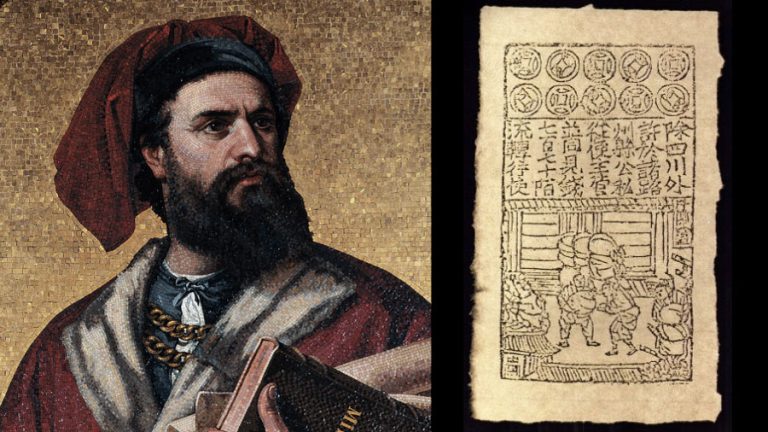Did you know that China was the first country to use paper money?

Who invented paper money? The history of paper money has its origin in China in the 7th century. Years later, Marco Polo recounted how the Great Khan controlled everything with bills.
It is said that the emperor established its official use in the year 812. However, the oldest surviving copies are from the 14th century.
The first paper banknotes are believed to have been in circulation during the Tang dynasty (618-907 AD).
The use of paper money began to be used as a result of the shortage of copper, with which coins were made.
By the 10th century, paper money or banknotes were in use throughout China. As copper was scarce, the Chinese emperor regulated the use of banknotes and authorized the government to manufacture them. Before, they were manufactured by private ‘companies’.
Chinese merchants used paper as a promissory note, where the person agreed to pay a certain amount. The paper had value and could be exchanged for products, just as it works today.
It was much easier to do business that way. People, especially merchants, no longer had to carry their sacks of coins for their transactions.
In the Book of Wonders, Marco Polo relates that by the year 1300 the economic prosperity that China was enjoying had much to do with the use of paper money.
Marco Polo described how the paper money used in ancient China was made. They took the thin skin between the thick outer bark of the mulberry trees (gelsus) and the wood. Sheets similar to those of cotton paper were made from that thin skin, but they were black.

Marco polo (left) | Reproduction of a Song banknote, possibly a Jiaozi, redeemable for 770 mò (right)
Then they were cut in different sizes, according to the value of each one. They bear the seal of the Great Khan, which gave validity to the paper.
In Marco Polo’s observations, collected in the chapter How the Great Khan spends paper for money , he describes how meticulous they were in authenticating banknotes. And whoever forged one, would be punished with capital punishment until the third generation.
All the towns were obliged to accept the notes, otherwise it could have cost them their lives to reject them.
What happened to the foreigners who brought their products to offer? According to Marco Polo, when merchants from India and elsewhere brought pearls, precious stones, gold, and silver, they offered them to no one but the Great Lord. Who paid them in cash with the bills. They accepted the payment, because it was valid in all the lands of the Great Khan. They could buy anything they wanted.
Without a doubt, reading Marco Polo’s journey, for this and other anecdotes, is a delight.
Banknotes were something new to him.
It took many more years for Europe to use paper money. It was not until the 17th century when banknote printing began in Europe.
It is often said that banknotes came to Europe from the Swedish Johan Palmstruch and were issued in Stockholm in 1661. In Spain they began to be issued during the reign of Carlos III. The use of paper money was always more comfortable to carry and prevented the circulation of heavy amounts of metal.
A fact about paper money . Paper money is the bearer document issued by a bank (generally the national bank of each country), and which circulates as a legal means of payment. It is, therefore, a type of currency; however, in everyday language, the name currency is usually reserved for metal pieces, and bills for those made of paper or plastic, as is the case in Mexico, which produces some plastic bills.
Something else on our curious planet
Speaking of money, do you know who are the people who have accumulated it the most? Take a look at this article: The 10 Richest Men in the World .
There ‘s a coin puzzle you can solve, or these other riddles with answers .
About inventions, do you know who invented the first car ? Or Who invented the computer mouse and why is it called that?
Here you will find more short curious facts and more curiosities of history .


